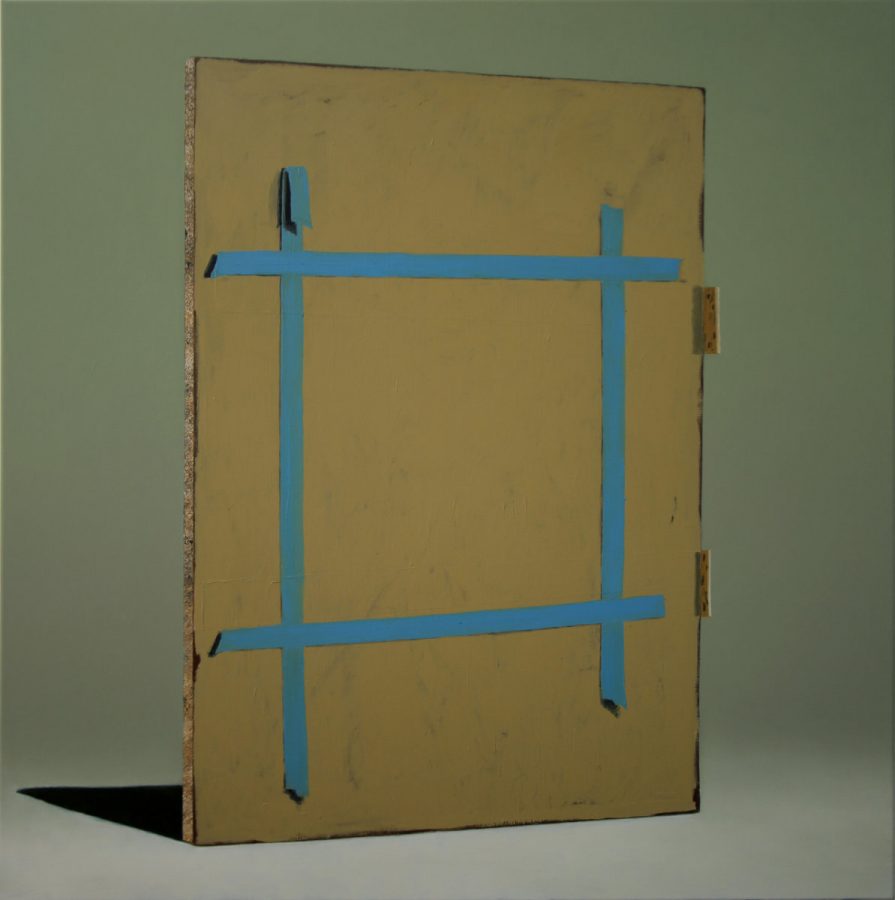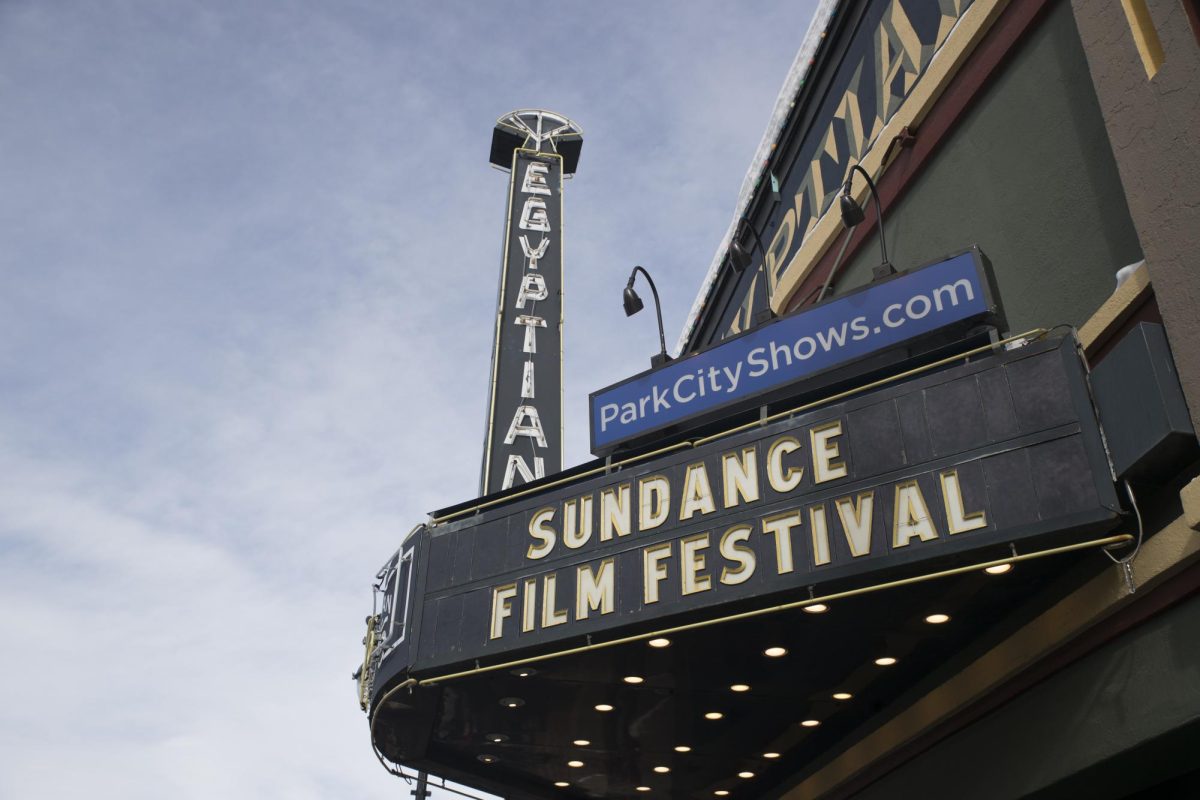‘Everywhere at the End of Time’ Depicts the Horrors of Dementia Through Sound
September 26, 2020
I’m more familiar than most with the horrors of dementia — my grandpa had Alzheimer’s disease — but I am still a stranger to how terrifying it must be to actually experience such mental decline.
“Everywhere at the End of Time” attempts to convey the experience of dementia through a vast six and a half hours of audio. Created by English electronic musician Leyland James Kirby under the moniker “The Caretaker” – released over a period of two and a half years from 2016 to 2019 – “Everywhere at the End of Time” is split into six stages, each of which illustrates a symptom or set of symptoms common with Alzheimer’s patients.
“The Caretaker” is a long-time project initially inspired by the 1980 Stanley Kubrick film “The Shining,” with its first release appropriately titled “Selected Memories From The Haunted Ballroom.” Since this first album, which came out in 1999, “The Caretaker” has evolved into much more than a mere tribute to a horror film. The project is now characterized primarily by the exploration of memory, reminiscence and intense sadness — themes pertinent in “Everywhere at the End of Time.”
Six and a half hours of audio cut into 50 tracks is a lot to unpack. So rather than break this record down track by track, I will be breaking things down stage by stage.
Breaking Things Down
Stage one is marked by a series of old jazz tunes that create a bittersweet and ominous feeling. The songs bring a smile to your face as if you were looking back on the best times of your life, but the overwhelming static and reverberation effects applied to these songs counter the sweet with bitter, placing a feeling of apprehension in the listener. It’s clear from the first track that something is wrong.
Stage two sounds beautiful yet terrifying. The atmospheric sound created by the previously mentioned static and reverberation effects now begin to overtake the jazz. If the jazz tunes represent memories, you can tell these memories are fighting something — the first track of this stage is fittingly titled “A Losing Battle is Raging.” The jazz tunes themselves chosen for this stage are evidently dragging more as if the person who holds these memories is getting increasingly sad and tired.
Stage three is similar to stage two, but the distorting effects are becoming even stronger, with the music drowning in and out, skipping at times, going out of tune briefly and abruptly stopping before moving onto the next song or memory. You can still feel consciousness in the patient at this stage because the jazz music is there, but it’s fleeting.
Stage four takes quite the turn. Bits and pieces of jazz music are here but they don’t last long enough – half a second per bit – to create any sort of typical enjoyable music experience. Though things are obviously in disarray at this stage, there is an apparent unorthodox feeling of peace that stays with you throughout the stage.
Stage five is now far beyond any feelings of peace as the music gives way to absolute chaos. Static effects now give off impressions of misfiring synapses. What’s left of the jazz music is completely corrupt except for a few rare, slightly steadier moments where a memory lasts 10 or so seconds, before returning to bedlam. Dark ambient sounds have now certainly become the primary contributor to the record.
Finale
Stage six is devoid of even glimpses of jazz. This stage feels like a vast, empty land with very little light. Swishing sounds move erratically on top of booms and roars that sound like they’re coming from an endless abyss. Strong sounds of static also intermittently visit. Things are hopeless, but there is still something here — even if it’s something horrible.
The last track of stage six and the entire record is titled “Place in the World Fades Away.” This track differentiates quite a bit from the rest of the stage in that it’s a lot calmer and feels significantly more endless and grand, like being stranded in a desert. It’s also the first time since stage three we’ve heard something consistently musically coherent via swelling sounds of “Interstellar”-esque organs.
Towards the end of the track, what sounds like an ethereal, melancholic hymn sung by a small choir moves in. This hymn marks the final minutes of any sort of being before it eventually cuts out and we’re left with complete silence — absolute nothingness for about 30 seconds, and then the album ends.
Thoughts
“Everywhere at the End of Time” is so much more than a collection of songs — it’s a cinematic-like story of experiencing loss, struggling and deteriorating down to nothing. If dementia is portrayed accurately by this album, then it’s certainly one of, if not the most, terrifying thing to go through in this world.
This article was updated on Sept. 23, 2021 to correct an error in the featured image’s caption. The artwork used as the featured image for this article is for Stage 6 not Stage 1 of “Everywhere at the End of Time.”













Katherine Bhana • Feb 28, 2024 at 7:15 pm
Sending prayers and support. My mother who had been diagnosed with Dementia for 3 years at the age of 82 had all her symptoms reversed with Ayurveda medicine from natural herbs centre after undergoing their Dementia Ayurvedic protocol, she’s now able to comprehend what is seen. God Bless all Dementia disease Caregivers. Stay Strong, take small moments throughout the day to thank yourself, to love your self, and pray to whatever faith, star, spiritual force you believe in and ask for strength, seek out naturalherbscentre. com i can personally vouch for these remedy but you would probably need to decide what works best for you
Ghos7 • Sep 22, 2021 at 8:25 pm
The picture shown at the top of the article is mislabeled. That is actually Ivan Seal’s artwork for Stage 6.
Darin • Aug 25, 2021 at 9:52 am
I’ve listened to the whole album over the span of the week, only while laying in bed or doing work, but I feel that in order to get the full experience that the Caretaker is trying to give us, we would have to listen to the whole day in one sitting, perhaps even just closing your eyes and doing nothing with your headphones in. The problem is that so few people have gotten this experience because a six and a half hour long track takes up over half of your day, and is a whole quarter of 24 hours.
Someday I intend to listen to the album again, this time giving it my full attention, alone of course, because I’m ought to cry despite already hearing the end.
Kris J • Jul 11, 2021 at 6:03 am
I have two theories
1) The crackling is actually the destruction of synapses with memories fading by the second which is also why the audio deteriorates by the second.
2) The last minute or so of stage 6 is the character that we follow for the whole record dying because of the 1 minute held at funerals for the dead.
Or maybe I’m thinking about it too much
KIng Kritikos • Apr 20, 2021 at 11:31 am
I think that this way a wonderful piece of music, which spoke to me deeply after my friend explained the backstory behind this. I was nearly brought to tears because of how sad the deep meaning of this is.